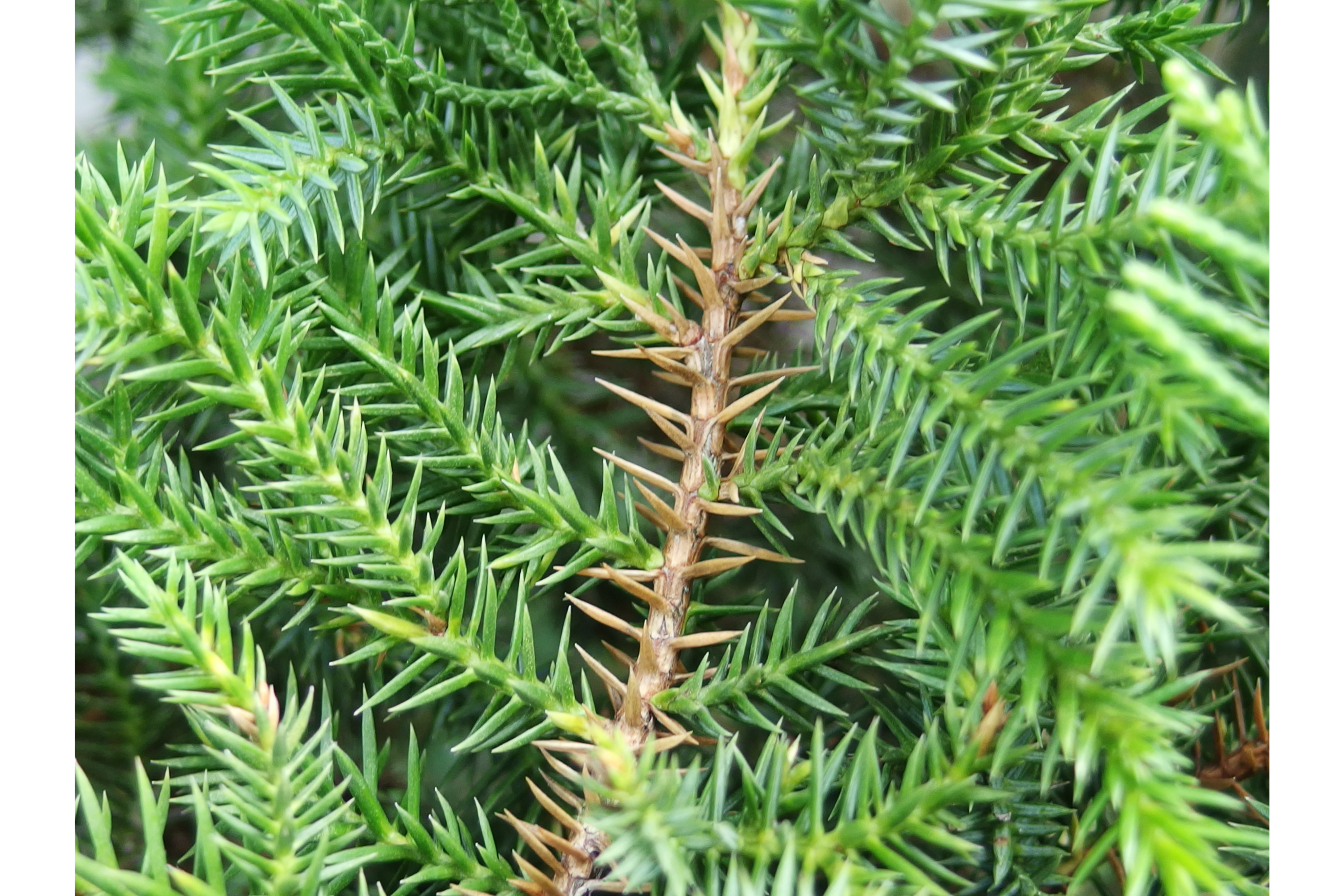Temple juniper
(Juniperus rigida)

Description
Juniperus rigida, the temple juniper, is a species of juniper, native to northern China, Mongolia, Korea, Japan, and the far southeast of Russia (Sakhalin and Primorsky Krai), occurring at altitudes of 10–2,200 m. The species is also naturalized in the United States (California and Alabama). It is closely related to Juniperus communis (Common Juniper) and Juniperus conferta (Shore Juniper), the latter sometimes treated as a variety or subspecies of J. rigida. It is a shrub or small tree growing to a height of 6–10 m and a trunk diameter up to 50 cm. The leaves are evergreen, needle-like, in whorls of three, bright green to yellowish-green, 10–23 mm long and 1-1.3 mm broad, with a single white stomatal band on the inner surface. It is dioecious, with separate male and female plants. The seed cones are berry-like, green ripening in 18 months to dark purple or brownish with a variable whitish waxy coating; they are spherical, 5–9 mm diameter, and have three (rarely six) fused scales in one (rarely two) whorls of three, each with a single seed (when six scales, only the three larger scales with seeds). The seeds are dispersed when birds eat the cones, digesting the fleshy scales and passing the hard seeds in their droppings. The pollen cones are yellow, 3–5 mm long, and fall soon after shedding their pollen in spring. It is grown as an ornamental tree, often planted in temple grounds in Japan. It is also often grown as bonsai. Junipers are coniferous trees and shrubs in the genus Juniperus of the cypress family Cupressaceae. Depending on taxonomic viewpoint, between 50 and 67 species of junipers are widely distributed throughout the Northern Hemisphere, from the Arctic, south to tropical Africa, throughout parts of western, central and southern Asia, east to eastern Tibet in the Old World, and in the mountains of Central America. The highest-known juniper forest occurs at an altitude of 4,900 metres (16,100 ft) in southeastern Tibet and the northern Himalayas, creating one of the highest tree lines on earth. Junipers vary in size and shape from tall trees, 20–40 metres (66–131 ft) tall, to columnar or low-spreading shrubs with long, trailing branches. They are evergreen with needle-like and/or scale-like leaves. They can be either monoecious or dioecious.
Taxonomic tree:







